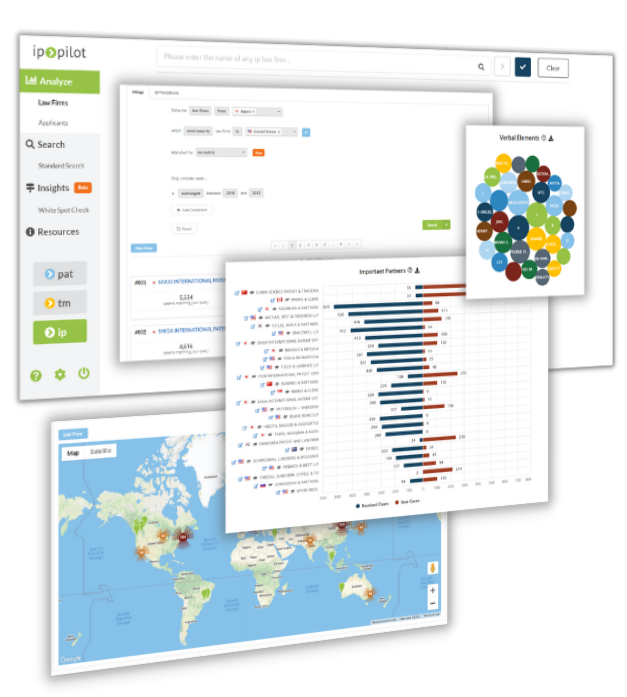The transmission of digital information and wireless communication networks played a somewhat crucial role in preserving social interactions and economic activities throughout 2020, not allowing to upstage the innovation and patenting activities in digital communication. The future interest in this technical area is also quite evident. Since the improvements in 5G are important for unleashing the Fourth Industrial Revolution, the demand for protecting inventions in digital communication will most probably remain stable or even increase.
On the surface, this technical area can potentially represent a scalable business development opportunity for many European representatives. In this respect, IP Pilot decided to dig deeper into the topic and investigate the overall IP-related trends, key players, and international case exchange in digital communication to evaluate the potentials that this technology domain can bring to local patent law firms’ businesses.
Our reports, therefore, covers the following points:
- What are the most recent worldwide and European filing trends in digital communication?
- Which European IP law firms took over most local and foreign digital communication-related filings in the last years?
- Which international law firms sent work in digital communication to the European representatives?
What are the most recent worldwide and European filing trends in digital communication?
Considering the origins of the innovation in digital communication, China, the United States, and Korea – the countries that drove an increase in the number of patent applications in the technical area in 2019 – retained their top positions last year. At the same time, only Chinese inventors grew the relevant output by 4%, while American and Korean ones underwent an 11% and 14% decrease.
In Europe, Sweden and Ericsson – its principal inventor in digital communication – maintained leadership as the country of origin. Finland and Germany followed the European champion, with Finland displaying a rather substantial 8% growth caused by Nokia’s increasing applications’ volume.
The EPO countries filed roughly 21% of patent filings and were outperformed only by China – 30% and the US – 25%.
Overall, the number of applications from European inventors was relatively stable and developed moderately compared to American and Asian countries, yet from a high level.
Which European IP law firms took over most local and foreign digital communication-related filings in the last years?
Considering the top 50 European IP law firms, 55% of digital communication cases were handled by German agents and 35% by British. Unsurprisingly, among the upper 10, six patent firms were from Germany and four from the UK. To name a few, BARDEHLE PAGENBERG PARTNERSCHAFT MBB, MITSCHERLICH PARTMBB, BOEHMERT & BOEHMERT as well as MAUCHER JENKINS, D. YOUNG & CO., and HGF LIMITED held the leading positions.
Apart from representatives from these two countries, French PLASSERAUD IP, Dutch NLO, Swedish AWA, and Irish HANNA MOORE & CURLEY and TOMKINS & CO. were the critical representatives of filings in digital communication.
To give you further insights about the law firms listed in the rank, BARDEHLE PAGENBERG, MAUCHER JENKINS, and TOMKINS & CO. handled the highest share of cases on behalf of Qualcomm. They were the three most prominent representatives of the client in Europe. Interestingly, they received work from roughly 13 priority filing firms from the US, including, for example, HOLLAND & HART LLP, ARENT FOX LLP, and PATTERSON + SHERIDAN, among others. The probability that multiple American IP law firms would choose three similar European IP law firms to represent a single client’s cases is rather low. Therefore, it is possible to conclude that Qualcomm was in charge of selecting agents for its filings in Europe. This goes in line with what IP Pilot’s decision-maker algorithm concluded.
All the top 10 European IP law firms for digital communication cases mainly prosecuted patent filings of the largest foreign applicants. For instance, MITSCHERLICH PARTMBB, BOEHMERT & BOEHMERT, PFENNING, MEINIG & PARTNER dealt with Huawei‘s applications. BOEHMERT & BOEHMERT, HGF LIMITED, and MAIWALD took over the substantial share of Intel‘s work in Europe. WUESTHOFF & WUESTHOFF represented LG‘s cases.
Unsurprisingly, the IP Pilot decision-maker algorithm predicted that the large applicants from abroad had the leverage to select the preferred partners in Europe and instructed the priority filing agents in this respect.
As for the representation of domestic clients, BOULT WADE TENNANT, SCHOPPE, ZIMMERMANN, STÖCKELER, ZINKLER, SCHENK & PARTNER, and EIP were the regional IP law firms working primarily with local applicants such as Vodafone, Fraunhofer Society, and, as in case of EIP, with multiple smaller firms.
Worth noting, according to our algorithm, BOULT WADE TENNANT and EIP for up to 75% of filings were free to select which foreign partner law firm abroad will receive client’s applications.
D. YOUNG & CO., KRAUS & WEISERT, and VIERING, JENTSCHURA & PARTNER also handled a substantial number of domestic subsequents and priority filings. However, their main clients were the local subsidiaries of international firms or international firms directly, such as, for example, Sony, Intel, and Apple.
Which international law firms sent work in digital communication to the European representatives?
Chinese, Korean, and American representatives were on the list of the top 10 foreign representatives sending cases to Europe (see Table 2). The patent applications were forwarded on behalf of such prominent corporates as Huawei, Oppo Mobile, and Qualcomm. On the surface, the foreign firms’ clients directly selected the European representatives. On the surface, the digital communication cases that European agents can receive from cooperation with patent firms from abroad are those for which the foreign agents were free to select partners and, thus, were not bound by the applicants’ preferences.
Once sending law firm was set as a decision-maker, completely different representatives appeared in the rank (see Table 3). Worth mentioning, the preliminary analysis of law firms’ profiles revealed that in most instances international representatives were able to choose European partners for somewhat less-scaled clients.
To sum up, the patenting activities in digital communication are expected to intensify, as innovation in that field is one of the prerequisites of further technological advancement. This technical area can, therefore, represent a substantial business development opportunity for European agents.
Following the general trends, it is possible to assume that China, the US, and Korea will drive future innovation in digital communication. As for EPO member states, even though there are some prominent pioneers of the technology in Sweden, Finland, and Germany, the relevant developments here are not as fastly paced and steep as in other locations.
In line with that, the top most active representatives for digital communication cases received the work from foreign applicants.
Unsurprisingly, large-scaled international corporations tend to identify the preferred European representatives for their cases, underlying the need to collaborate with applicants rather than with priority filing agents. As the rough analysis of the sending law firms’ portfolios outlined, the opposite might be true for smaller companies. Here, there are some indications that international patent firms have more influence on selecting preferred partners for digital communication cases, implying the benefits of direct collaboration between the law firms.








